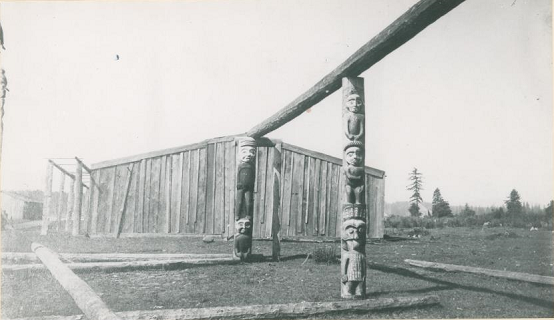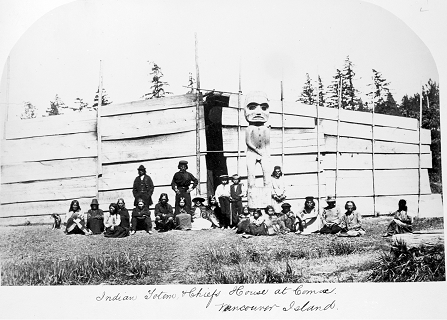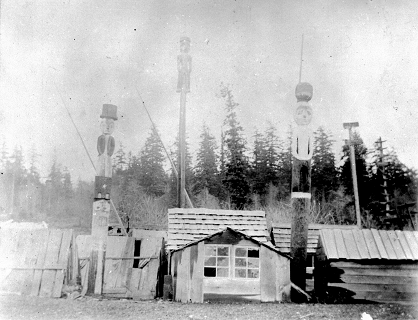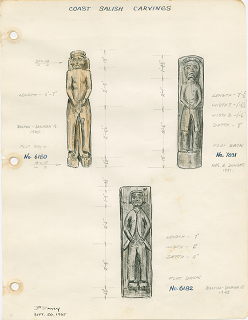House Post (RBCM 7031)

House Post

RBCM 7031 is a fragment of a larger house post, similar to one of these photographed at K'ómoks village in 1873 or 1879 by Richard Maynard. PN 1157.

A Coast Salish-style house and inhabitants at the K'ómoks village between 1866 and 1870. The post may have been inside a house like this. Frederick Dally photograph. C-09265.

This photograph of the K'ómoks village in the 1890s shows the changes brought by colonization. The poles are similar in style to the house post and similarly depict people wearing European clothing. D-06517.

Some of the figures from K'ómoks house posts donated to the museum in 1948, drawn by John Smyly in 1965. RBCM 6182 is at the bottom.
In 1948 a resident of the city of Courtenay, near Comox, donated a group of house posts, some of them fragmentary, to the BC Provincial Museum. Although the exact origin of the posts is unclear, they are thought to have supported roof beams inside one or more houses in the K'ómoks village and to date from the mid-19th century. This carving, a section of a larger house post, was part of that donation. It appears to portray an Indigenous man wearing European-style clothing – a long coat and trousers.
Port Augusta, as Comox Harbour was known, was a centre of contact and trade with Europeans beginning in the 1790s when Captain Vancouver from England and Captains Galiano and Valdes from Spain visited the area. The colonial government promoted the region’s potential for agriculture, and settlers began arriving in the early 1860s. Just as the Europeans observed the Indigenous populations, Indigenous people examined the newcomers, often finding their dress and habits odd and comical. It is tempting to interpret this house post as a K'ómoks carver’s comment on his community’s complex interactions with the newcomers who came to their territories and changed their way of life forever. In the First Peoples gallery, this post and another from the same 1948 donation (RBCM 6182) flank a film and audio track illustrating how newcomers saw Indigenous peoples as exotic and mysterious. The K'ómoks carvings on either side of the screen are intended to provide the counterpoint to that view.
Do you have a story to share about this item? Add your voice to the community.